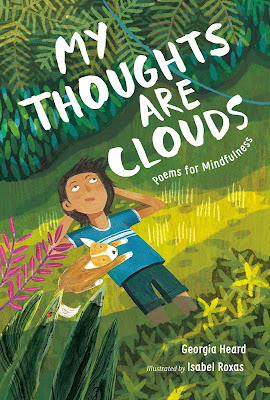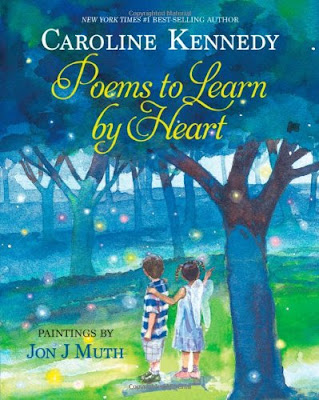Octavia Butler's Kindred (Graphic Novel)
Kindred by Octavia E. Butler - Graphic Novel Adaptation by Damian Duffy and John Jennings
This was my first introduction to the work of Octavia E. Butler, and as a fan of science fiction, my only regret is that I hadn’t read her sooner. This graphic novel adaptation by Damian Duffy and John Jennings is a raw and disturbing tribute to Butler’s vision. Through the conceit of time travel, Kindred exposes the truth that, as much as we’d prefer to imagine that the stain of slavery in the United States is ancient history, modern Black people may encounter the ugliness of racism in the present in a way that feels like involuntarily traveling back through time. When she is transported to the antebellum South, Dana is startled by the casual use of racial slurs and violence, and she finds herself needing to quickly adapt to her surroundings in order to survive. Since the novel’s protagonist is married to a white man who also gets pulled back in time with his wife, their status as equals dramatically shifts. This aspect of the story illuminates the difficulty white individuals may have in understanding the challenges that Black people face in society, wrongly assuming that the past is simply in the past.
For teen readers, Kindred may be an introduction to some of the uncomfortable truths of American slavery and the ways in which our racial past remains unresolved in modern times. As Michael Cart (2008) for YALSA notes, “Still another value of young adult literature is its capacity for telling its readers the truth, however disagreeable that may sometimes be, for in this way it equips readers for dealing with the realities of impending adulthood and for assuming the rights and responsibilities of citizenship.” As modern teen readers grapple with their place in society, novels like Kindred provide a powerful lens for understanding the world they inherit. As Shannon Hale argues in the Brock (2019, pp. 9) text, “Stories make us human. We form bonds by swapping personal stories with others, and reading fiction is a deeply immersive exercise in empathy.” Although Hale was referring to gender and the value of girls and boys developing empathy for each other through reading, certainly the same could be said about race. Through reading, teens may gain a fuller understanding of the ghosts that haunt our society, causing them to become more compassionate, vocal advocates for racial justice in every sphere of their lives.
Synopsis
For teen readers, Kindred may be an introduction to some of the uncomfortable truths of American slavery and the ways in which our racial past remains unresolved in modern times. As Michael Cart (2008) for YALSA notes, “Still another value of young adult literature is its capacity for telling its readers the truth, however disagreeable that may sometimes be, for in this way it equips readers for dealing with the realities of impending adulthood and for assuming the rights and responsibilities of citizenship.” As modern teen readers grapple with their place in society, novels like Kindred provide a powerful lens for understanding the world they inherit. As Shannon Hale argues in the Brock (2019, pp. 9) text, “Stories make us human. We form bonds by swapping personal stories with others, and reading fiction is a deeply immersive exercise in empathy.” Although Hale was referring to gender and the value of girls and boys developing empathy for each other through reading, certainly the same could be said about race. Through reading, teens may gain a fuller understanding of the ghosts that haunt our society, causing them to become more compassionate, vocal advocates for racial justice in every sphere of their lives.
Synopsis
This concept of America’s racial history haunting the present is the focus of my first “tweet.” I attempted to distill the essence of the novel in order to entice readers with a mention of the raw artistic style of the illustrations as well as a hint to the overall significance of the novel’s message. I included the detail that Dana travels back in time from the 1970s because this will help readers understand that the novel was written shortly after the Civil Rights Act was passed, and racial equality in the United States was just emerging, the wounds of the past hardly healed, much like it remains today. Sadly, Butler’s commentary remains fresh.
Excerpt
My second “tweet” focused on a moment in which Dana, hidden behind a tree, observes in horror as a man is brutally whipped. The sensory language disturbingly highlights how Dana is forced to confront the reality of what is happening before her eyes. The genius of Kindred is that it prevents the reader from relegating slavery to distant history and forces us to recognize its lasting implications for the present. With Dana, we view the moment with modern eyes, and because we share her shock, we glimpse these crimes against humanity with renewed awareness.
Kindred Book Review Excerpts:
“The heavily shaded, thick-lined, and rough-edged art lends a grimness appropriate to a life of jagged brutality and fearful uncertainty. Both a rewarding way to re-experience the tale and an accessible way to discover it.” Booklist
“A searing, painful, but necessary graphic novel adaptation of Butler’s classic sci-fi work… A compelling, masterly graphic novel for all libraries serving teens.” School Library Journal
“Jennings and Duffy bring a new immediacy to Butler’s classic time-travel novel… The violence is wrenching at times, but never over the top; what’s more disturbing, ultimately, is seeing the story through the eyes of someone who has been rendered powerless by the society around her.” School Library Journal, Graphic Novels for Teens
Recommended Reading:
Excerpt
My second “tweet” focused on a moment in which Dana, hidden behind a tree, observes in horror as a man is brutally whipped. The sensory language disturbingly highlights how Dana is forced to confront the reality of what is happening before her eyes. The genius of Kindred is that it prevents the reader from relegating slavery to distant history and forces us to recognize its lasting implications for the present. With Dana, we view the moment with modern eyes, and because we share her shock, we glimpse these crimes against humanity with renewed awareness.
Kindred Book Review Excerpts:
“The heavily shaded, thick-lined, and rough-edged art lends a grimness appropriate to a life of jagged brutality and fearful uncertainty. Both a rewarding way to re-experience the tale and an accessible way to discover it.” Booklist
“A searing, painful, but necessary graphic novel adaptation of Butler’s classic sci-fi work… A compelling, masterly graphic novel for all libraries serving teens.” School Library Journal
“Jennings and Duffy bring a new immediacy to Butler’s classic time-travel novel… The violence is wrenching at times, but never over the top; what’s more disturbing, ultimately, is seeing the story through the eyes of someone who has been rendered powerless by the society around her.” School Library Journal, Graphic Novels for Teens
Recommended Reading:
Parable of the Sower by Octavia E. Butler (graphic novel)
The first recommended title I included is the graphic novel adaptation of The Parable of the Sower by Octavia E. Butler because it was also adapted and illustrated by Damian Duffy and John Jennings. If a reader loved Kindred, the similarities in style and pacing would be a smooth transition for a next read. This novel, however, is set in a dystopian future, so it would provide a glimpse into Octavia Butler’s range while remaining accessible for a reader who prefers the graphic novel format.
Stamped: Racism, Antiracism, and You by Jason Reynolds and Ibram X. Kendi
For the second book recommendation, I chose this nonfiction title which traces the history of racism in the United States. The book is organized by time period, so readers will be able to grasp the historical context of Kindred, the antebellum South as well as the context in which Octavia Butler was writing in the 1970s and 80s. This broad scope allows readers to understand the deep message of Kindred, that the work of antiracism is not in the past, but continues unbroken to our current times.
Big Black Stand at Attica by Frank “Big Black” Smith
My third book choice is a graphic novel memoir dealing with the revolt of prisoners in New York’s Attica State Prison in the summer of 1971. After suffering rampant brutality and racism at the hands of the prison guards, inmates held their captors hostage and demanded better treatment. This true story illustrates the ongoing plight of Black people during the 1970s and provides more context to the social climate in which Octavia Butler wrote her novels.
In Darkness by Nick Lake
The final text I recommend in conjunction with Kindred is this astonishing piece of historical fiction, In Darkness. After the 2010 earthquake in Haiti, a young man is trapped under the rubble of a collapsed hospital. He narrates the novel from the darkness and begins to hallucinate, recounting his life and receiving strange visions of Toussaint Louverture, the ex-slave who led the Haitian Revolution in which enslaved Haitians revolted against their oppressors. The pairing of contemporary Haiti and its myriad tragedies with the history of the Haitian Revolution reminded me of Kindred with its dual time period and focus on oppression and liberation. Readers who enjoyed the sci-fi elements of Kindred may appreciate the mind-bending narrative of In Darkness, full of voodoo magic, brutal violence, and psychic visions.
References:
Brock, R. (2019). Young adult literature in action (3rd ed.). Libraries Unlimited.
Cart, M. (2008). The value of young adult literature. Retrieved from http://www.ala.org/yalsa/guidelines/whitepapers/yalit
Duffy, D., Jennings, J., & Butler, O. E. (2018). Octavia Butler's kindred: Graphic novel adaptation. Abrams ComicArts.
Duffy, D., Jennings, J., & Butler, O. E. (2020). Parable of the sower: A graphic novel adaptation. Harry N. Abrams.
Lake, N. (2014). In darkness. Holt McDougal.
Moore, H.P. (1863). [File:James Hopkinsons Plantation Slaves Planting Sweet Potatoes.jpg] [Photograph]. New-York Historical Society, New York, NY, United States. https://commons.m.wikimedia.org/wiki/File:James_Hopkinsons_Plantation_Slaves_Planting_Sweet_Potatoes.jpg
Reynolds, J., & Kendi, I.X. (2020). Stamped: Racism, antiracism, and you. Little, Brown Books for Young Readers.
Smith, F., Reinmuth, J., & Ameziane. (2020). Big Black: Stand at Attica. Archaia.




Comments
Post a Comment